- Search Please fill out this field.
- Manage Your Subscription
- Give a Gift Subscription
- Sweepstakes

15 Best Places to Visit in India, According to Travel Experts
From the alpine meadows of Kashmir to the palm-fringed beaches of Goa, these are some of the subcontinent’s most enchanting destinations.
Margot Bigg is a freelance travel writer and editor who has spent most of her adult life traveling and living overseas. Her favorite topics include India travel, experiential travel, wellness, hotels, and the arts. When not on the road, Margot enjoys studying languages, discovering new music, taking pictures of random cats, and planning her next adventures.
guillermo1956/Getty Images
As a former longtime Delhiite and frequent traveler to India, people often ask me what the country is like. I never know how to respond, for trying to sum up a nation as vast and diverse as India feels impossible. So, instead, I asked a few experts for their insights.
“If you visit India, you feel you have visited several countries, as every part is different,” says Mohd Shafi Billo, an inbound tour operator who specializes in helping international travelers plan their trips to the country. “It’s an exceptional destination, thanks to its culture, history, and inclusiveness of different people from different faiths, and it has everything to offer, from forts to mausoleums, wildlife tours to mountain adventures.”
Shoba Rudra, founder and partner at hospitality consultancy Rare India , agrees. “The country is living a dynamic moment in history, ever-changing,” she says. “What's constant, however, is the vibrant culture lived through its festivals, cuisine, heritage, crafts, and performing arts.”
While it would take years to see it all, India is an approachable destination — if you can narrow things down. With that in mind, here are 15 of the best places to get you started on your sojourn to the subcontinent.
Gautier Houba/Travel + Leisure
Stretching along the southernmost part of India’s Malabar Coast, the tropical state of Kerala entices visitors with its marshy backwaters, which most people visit on overnight houseboat adventures. These popular cruises “showcase lush landscapes and peaceful villages, and [give visitors] a glimpse into local life amid tranquil waters and picturesque surroundings,” says Billo. While the backwaters are a star attraction, the state offers much more to explore, from the tea plantations of Munnar, known for its cool climate and seemingly endless rolling hills, to the historic city of Kochi, celebrated in equal measure for its rich coastal history and contemporary art scene . The beaches aren’t too shabby, either. “North Kerala is also famous, as the Malabar Coast is where the spice trade flourished,” says Rudra. “The coastal area is picturesque and this region is still unexplored.”
Faizal A Rahiman/Getty Images
On the opposite end of the country from Kerala, Kashmir offers entirely different — but equally captivating — landscapes. With its alpine climate, evergreen trees, and snowy winters, Kashmir is often likened to a mini Switzerland . Famed 13th-century Sufi poet Amir Khusrau once proclaimed in Farsi, “If there is a paradise on earth, it is this,” and he may have been onto something. At the heart of it all is Srinagar, Kashmir’s capital city, which is known for its elegant gardens and watery centerpiece, Dal Lake. “Highlights include staying on a houseboat or taking a shikara [traditional Kashmiri boat] ride,” says Billo, who hails from the area. Don't leave without indulging in wazwan , an opulent, meat-heavy feast that can feature up to three dozen dishes in one sitting.
Alongkot Sumritjearapol/Getty Images
Occupying a high-altitude plateau in the northernmost reaches of India, Ladakh is characterized by otherworldly landscapes and big skies, punctuated by palatial stupas and monasteries. Many visitors come to Ladakh’s capital, Leh, during the short summer tourist season, but this surreal region offers plenty more to experience beyond the city. Billo suggests visiting the Nubra Valley, an isolated part of the old Silk Road that’s only accessible by crossing Khardung La, one of the world’s highest motorable passes. “The valley offers a glimpse into Ladakh's unique geography and cultural diversity with monasteries, quaint villages, and apricot orchards,” says Billo. The region is also rich with unusual wildlife, from elusive snow leopards to the scaled-down Bactrian camels that originated in the steppes of Central Asia.
Rishikesh, Uttarakhand
al_la/Getty Images
On the banks of the sacred Ganges River, the holy city of Rishikesh has held a place in the hearts of spiritually minded travelers — both from India and abroad — for generations. It’s the self-proclaimed “yoga capital of the world,” with a mix of traditional ashrams (spiritual rest houses) that cater largely to Hindu pilgrims and yoga centers that attract international visitors with teacher-training courses and meditation retreats. If you’re not into yoga, you’ll still find plenty to do here. Popular activities include visiting the ruins of the Maharishi Mahesh Yogi’s ashram (dubbed the Beatles Ashram in honor of its most famous former residents) to whitewater rafting adventures on the mighty Ganges. It’s also a great place for a wellness getaway, and nearby Ananda in the Himalayas was voted one of Travel + Leisure readers' favorite international spas in 2023.
Auroville, Tamil Nadu
mazzzur/Getty Images
If you’re looking for a place that’s unlike anywhere else in India — or, frankly, the world — head to the intentional community of Auroville in South India. This UNESCO-recognized global township was founded in the 1960s with the goal of "realizing human unity," beyond the illusory divisions of creed or nationality, and it's home to generations of residents from around the world. Many visitors come for an hour or two, just long enough to view Auroville’s spiritual center — the golden, dome-shaped Matrimandir . However, it’s worth sticking around a bit longer to get a feel for what the community is about. As Akash Kapur, who grew up in Auroville and authored " Better to Have Gone " and " India Becoming ," puts it: "Come to Auroville if you're interested in alternative societies, sustainable living, or spirituality, but try not to just drop in for a few hours (as many do), and instead spend some time here, really getting to know the people and their work. The community rewards sustained immersion."
Andaman Islands
Vyacheslav Argenberg/Getty Images
Although most people associate the crystalline waters of the Andaman Sea with Thai island getaways, the Andaman and Nicobar Islands in this tropical region are under Indian control. This little stretch of paradise is full of gorgeous shorelines, but most visitors devote their vacations to the island of Swaraj Dweep (formerly known as Havelock). The most popular beach on the island is Radhanagar Beach , which offers just over a mile of white sand sandwiched between tropical jungle and warm, transparent waters. Getting to this remote island requires a bit of gumption: You'll need to fly from the Indian mainland to Port Blair on South Andaman Island, then catch a ferry or charter a seaplane for the final stretch. While visitors are welcome on many islands in the chain, a few — including secluded North Sentinel Island — are off-limits.
While many travelers see India’s capital as a jumping-off point for visiting further-afield destinations, it’s worth sticking around for a while to truly appreciate what Delhi has to offer. There’s certainly never a dull moment in this busy metropolis, whether you’re shopping for handicrafts at one of its numerous markets or learning about medieval and Mughal history at one of its three UNESCO World Heritage Sites: Humayun's Tomb, Qutb Minar, and Red Fort. Although Delhi is undeniably rambunctious, it also has a quieter, more peaceful side that you can find amidst the trees and 15th-century tombs of Central Delhi’s Lodi Gardens or in the quiet interiors of the Baháʼí Lotus Temple.
Taj Mahal, Agra, Uttar Pradesh
Many travelers to India put the 17th-century Taj Mahal at the top of their list. This white marble mausoleum is easily India’s most recognizable structure — and it’s one of the New Seven Wonders of the World . This popular attraction also has a romantic backstory. “This iconic symbol of love is renowned for its architectural beauty, intricate marble work, and the captivating story behind its creation by emperor Shah Jahan in memory of his wife, Mumtaz Mahal,” notes Billo. The bodies of the emperor and his wife remain interred in the Taj to this day.
Jaipur. Rajasthan
The capital of Rajasthan and one-third of North India’s popular Golden Triangle tourist route (which also includes Agra and Delhi), Jaipur is a must-visit for those who love architecture and shopping. “The Pink City, as it's nicknamed, offers a rich cultural heritage, stunning [landmarks] like Amber Fort, vibrant bazaars, and intricate handicrafts,” says Billo. Many of Jaipur's key attractions are found in the historic walled part of the city, which became a UNESCO World Heritage Site in 2019. Highlights include Jantar Mantar (a collection of oversized — and fully functional — astronomical instruments dating to the 17th century) and Hawa Mahal, or Palace of the Winds, a honeycomb-shaped palace designed with tiny windows that allowed air to flow freely through its interior.
Jodhpur, Rajasthan
platongkoh/Getty Images
Dubbed the Blue City because of the cerulean-colored buildings that extend for miles through the oldest part of town, Jodhpur has long attracted travelers eager to explore the ramparts of the larger-than-life Mehrangarh Fort. It’s also home to the grandiose Umaid Bhawan Palace , which made headlines in 2018 when Priyanka Chopra and Nick Jonas tied the knot there. While Jodhpur’s beautiful, regal architecture is reason enough to visit, there’s more to the city than massive forts and grand palaces. “The area around the Toorji ka Jhalra stepwell in the old city is fun to explore,” says hotelier Sapna Bhatia, owner of Kaner Retreat and Jodhpur-area native. “For nature enthusiasts, there’s the Rao Jodha desert park near Mehrangarh Fort.”
Udaipur, Rajasthan
Jeremy Woodhouse/Getty Images
T+L readers' favorite city in Asia and second favorite city in the world , Udaipur very much fits the bill of a fairy tale destination. Nicknamed the City of Lakes, thanks to its seven lakes, this gorgeous destination is home to some of India's finest luxury hotels plus historic whitewashed palaces, including the magnificent City Palace, an 11-palace complex that houses hotels, a huge museum with an impressive collection of European crystal, and a royal residence. A short boat ride from the palace lies the 18th-century Taj Lake Palace, an opulent palace-turned-hotel in the middle of Lake Pichola. It’s a quick drive from The Oberoi, Udaivilas , a purpose-built palatial hotel with onion-domed cupolas and a moat-like swimming pool that directly connects to some of the rooms.
If you’re looking for a less-frequented, but no less amazing, alternative to more touristed states such as Rajasthan, consider Gujarat. “Under-explored but culturally rich, this state in India is a tapestry of festivals, textiles, architectural heritage, communities, and landscape,” says Rudra. Gujarat was also the birthplace of Mahatma Gandhi, who led the Salt March, one of his most famous acts of peaceful protest, through the state in 1930. Rudra suggests visiting the National Salt Satyagraha Memorial , which “honors the activists through murals, installations, sculptures, art, and related film.” It's also worth checking out the Kutch district, known for its distinct metal bells , which were originally used for keeping track of livestock and are now popular as decorative wind chimes.
Kaziranga National Park, Assam
ePhotocorp/Getty Images
The northeast Indian state of Assam is home to a treasure for wildlife enthusiasts: Kaziranga National Park . This expansive, UNESCO-listed wildlife refuge near the borders of Bangladesh and Bhutan has the largest population of Indian one-horned rhinoceroses on the planet, providing a home to roughly 2,000 of these massive beasts. Although rhinos are the star attraction on park safaris, all sorts of animals live here, including tigers, elephants, gibbons, sloth bears, and a small number of endangered Ganges River dolphins.
Historic, glitzy, and positively gargantuan, Mumbai (formerly known as Bombay) is easily one of India’s most cosmopolitan destinations. This city by the sea is the nation's financial and entertainment capital, and while you’re unlikely to rub shoulders with Bollywood stars here, you're sure to see a lot of impressive attractions in very little time. Take a boat out to Elephanta Island to explore fifth– and sixth–century rock-hewn cave temples, marvel at the grand Indo-Saracenic architecture at Chhatrapati Shivaji Terminus , or see thousands of clothes hanging out to dry at Dhobi Ghat, the world's largest open-air laundry. Then, head to the sleek neighborhood of Bandra West, where many of Mumbai’s best restaurants and hotels are located, including Taj Lands End, voted T+L readers' favorite city hotel in India in 2023.
India’s smallest state, Goa, is arguably its top beach destination, where long days of swimming and sunbathing turn into longer nights of partying on the sand. While Goa has been known as a hippie haven since the 1960s, it's started to shed its reputation in recent decades. It’s still very much a party state, though it also draws in families and couples in search of sea and sun, sans nightlife. It’s a great place for history buffs as well, with numerous seaside forts and UNESCO-recognized churches that were built when Goa was under Portuguese rule. And while the destination has always been loved for its fiery dishes that combine traditional Konkani ingredients with Portuguese influences, it has also emerged as a culinary hot spot , where a new generation of chefs is showcasing everything from Japanese yakitori to jackfruit tamales.

20 Best Places to Visit in India
Written by Joni Sweet Updated Mar 30, 2022
Deeply traditional yet endlessly surprising, India is one of those destinations that ends up on every traveler's bucket list at some point. They might dream of going to Agra to see the Taj Mahal in all its glory, or exploring the royal palaces scattered throughout Rajasthan. Others find themselves attracted to the jaw-dropping landscapes in Darjeeling and Rishikesh , or the postcard-perfect beaches in Goa.
There's also India's big cities– New Delhi, Mumbai, and Kolkata –each of which has its own distinctive personality. It's impossible to get bored exploring the temples, markets, and colorful streets of India's biggest urban centers. The hardest part of traveling to India is figuring out exactly what to see on your journey.
Whether you're going on an epic backpacking trip or a luxe vacation, plan your adventure with this list of the best places to visit in India.
2. New Delhi
4. rajasthan, 5. rishikesh, 6. varanasi, 7. amritsar, 10. ajanta and ellora caves, 11. darjeeling, 12. kolkata, 13. ahmedabad, 19. andaman islands, 20. mcleod ganj, map of places to visit in india.
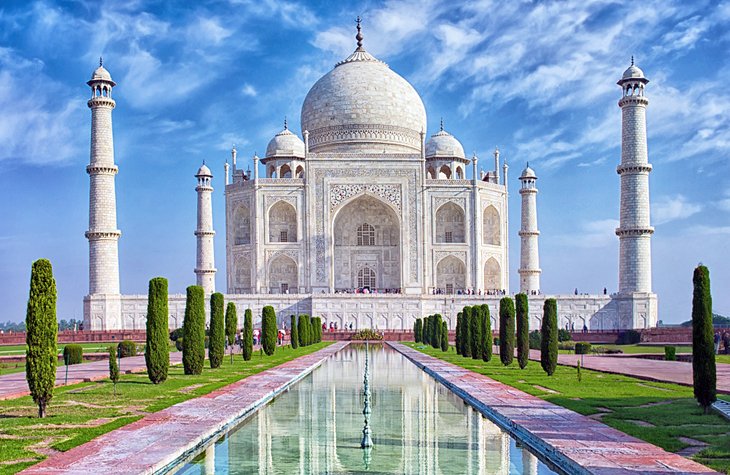
If there was just one symbol to represent all of India, it would be the Taj Mahal . The monument inspires millions of tourists to make the trip to Agra every year, waking up before dawn to see magnificent structure radiate at sunrise. But Agra tops the list of the best places to visit in India for reasons that go beyond India's most famous attraction.
The city in Uttar Pradesh is chock-full of marvelous Mughal monuments , like Itimad-ud-Daulah's Tomb and Akbar's Mausoleum , decked out in hypnotic inlaid marble designs from top to bottom. Plus, tourists can also see another UNESCO World Heritage Site: the Agra Fort. With so many wonders in just one place, Agra is a must-visit city for tourists in India.
- Read More: Top-Rated Attractions & Places to Visit in Agra
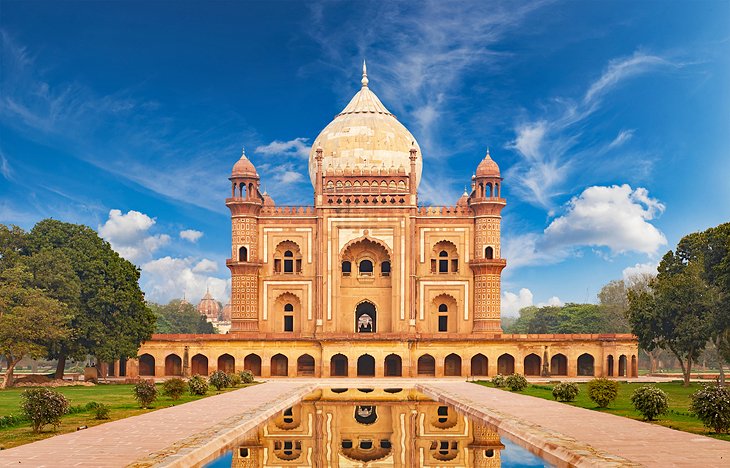
Despite its crowds and chaos, New Delhi offers tourists a lot to love. The colorful capital of India is the perfect marriage of heritage and modernity. Old Delhi contains some of the country's most treasured attractions, including the Jama Masjid, Red Fort, and Chandni Chowk shopping thoroughfare. But throughout the sprawling city, tourists can explore countless other sites of spiritual and cultural importance.
Top tourist attractions in New Delhi include the Lotus Temple; India Gate; Humayun's Tomb; and India's tallest minaret, Qutub Minar. Fill your days exploring these mesmerizing sites, and refueling at street-side chai stalls and high-end restaurants.
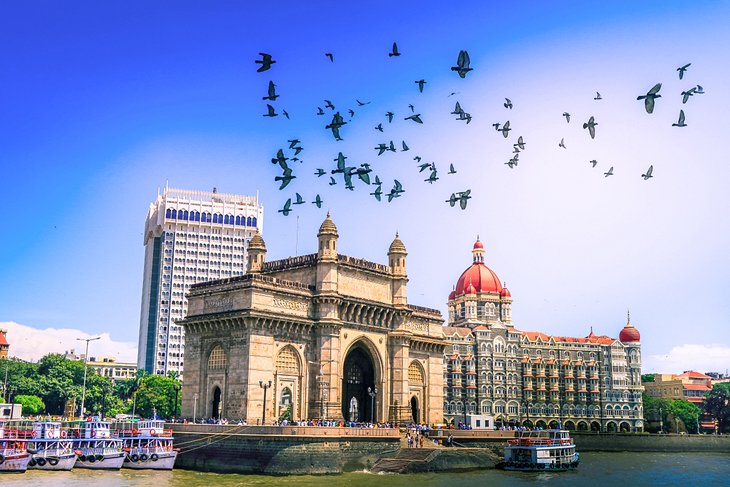
Want to see a more cosmopolitan side of India? Head to the energetic, coastal city of Mumbai–home to ultra-wealthy entrepreneurs and the hottest Bollywood actors. Tourists are never far from five-star hotels or gourmet restaurants in this luxe city. And even if those activities are out of budget, a cruise down the beloved Marine Drive will make you feel like royalty as you catch a glimpse of the scenic coast and glamorous Art Deco buildings.
You can also see a more authentic, local side of Mumbai in the bustling "Thieves Market" or at the Churchgate railway station , where hundreds of thousands of homemade lunches are packed up for delivery to the city's office workers every day.
Make sure you devote a day to checking out Sanjay Gandhi National Park and exploring the 2,000-year-old Kanheri Cave carvings.
- Read More: Top-Rated Tourist Attractions in Mumbai
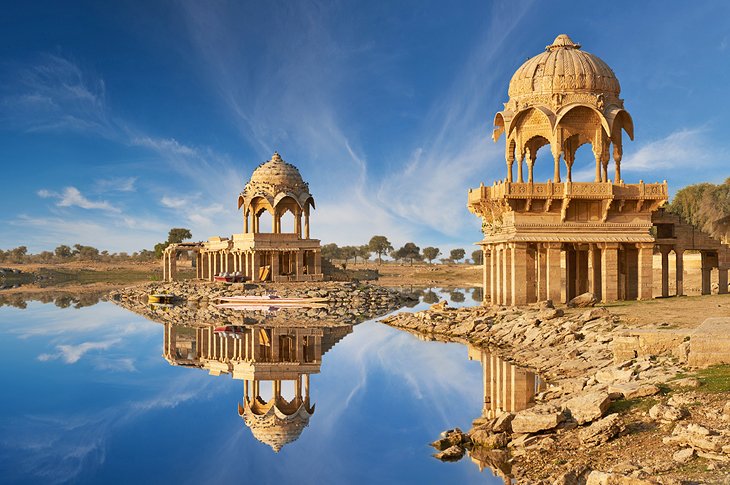
Translated to "Land of Kings," Rajasthan brims with remnants of the kings and queens of past centuries. Between its glittering palaces , stately forts, and lively festivals, this western state deserves a starring role in your trip to India.
Jaipur , part of the Golden Triangle Tourist Circuit, which also includes Agra and New Delhi, is one of the top places to visit in Rajasthan. Dubbed "The Paris of India," it's known for its characteristic pink buildings, lavish City Palace, and jewelry stores galore.
The "Blue City," Jodhpur , offers tourists an equally unforgettable experience in its hilltop Mehrangarh Fort .
Udaipur oozes romance with its flower-lined streets and fantastic City Palace Complex , where the royal family still lives today.
And Jaisalmer looks like an Arabian Nights fairy tale brought to life, with its yellow sandstone structures and historic havelis (mansions). No matter where you end up in this desert state, you'll be captivated by the magic of Rajasthan.
- Read More: Top-Rated Attractions & Places to Visit in Jaipur
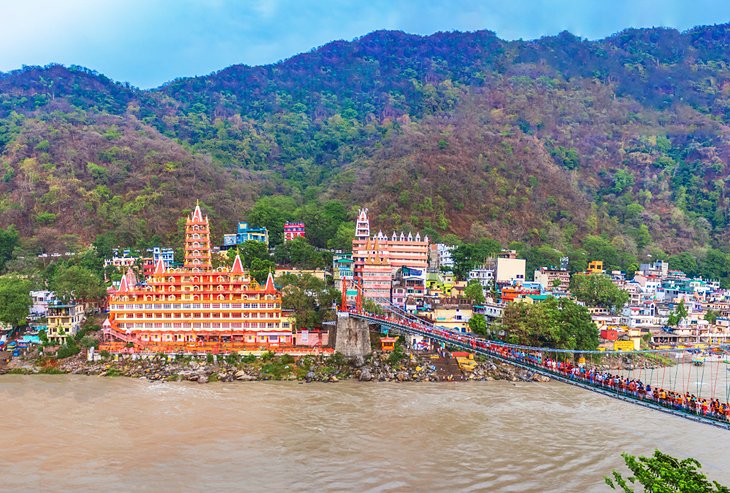
Rishikesh has been on the radar for spiritually minded travelers since the late 1960s, when the Beatles spent time in Maharishi Mahesh Yogi's ashram –now an abandoned site that has become an off-the-beaten-path tourist attraction for fans.
The town is nestled in the foothills of the Himalayas on the banks of the holy Ganges River, and serves as a center for yoga and pilgrimages . Take part in the action, or just enjoy the sounds of the temple bells and sightseeing from Rishikesh's two suspension bridges , often guarded by assertive families of monkeys. Keep your distance.
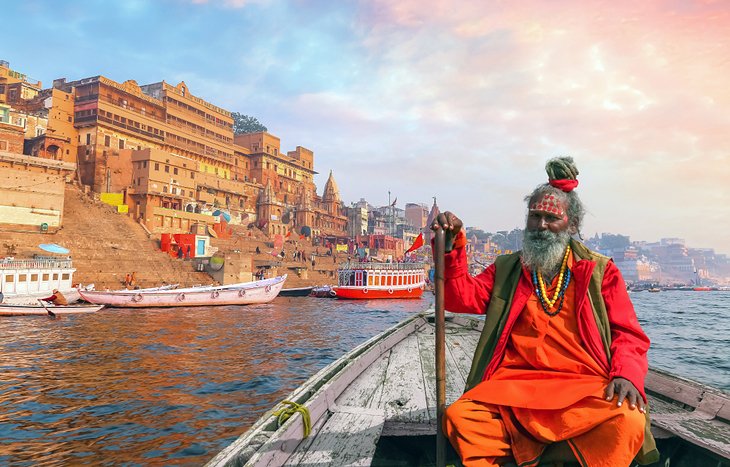
One of the oldest continually inhabited cities in the world, Varanasi is arguably the holiest place in India. The spiritual activities take place along the sacred Ganges River, where pilgrims bathe and mourners cremate recently deceased relatives in plain view of passersby.
Tourists, on the other hand, find their own flavor of spiritualism taking sunrise boat rides, releasing floral blessings that float on the river, and watching the fire-filled Hindu chanting ceremonies from the steep ghats.
Away from the water, the streets of the old town twist and turn like an endless maze. Legend has it that there's still no accurate map of Varanasi, and once you experience the labyrinthine city for yourself, you'll be inclined to believe it.
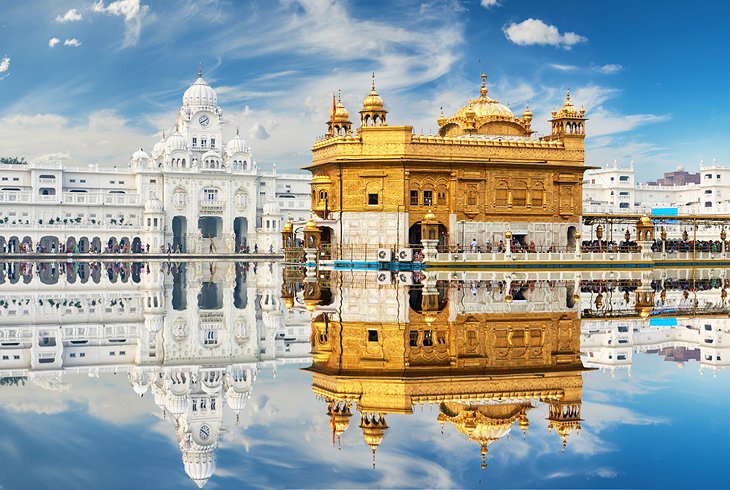
Amritsar, the "Jewel of Punjab," has made its claim to fame with its remarkable Golden Temple . One of the holiest places in the world for Sikhs, the gilded structure is a sight to behold, glistening in the sun and reflecting into the large pool that surrounds it.
The attraction also boasts the world's largest community kitchen , which serves 100,000 diners (including curious tourists!) lentils and curries every day.
While in Amritsar, plan to spend an afternoon at the border of Pakistan to see the Beating Retreat Ceremony. Goose-stepping guards from long-term rivals India and Pakistan open and close the border gates at dusk in an over-the-top ceremony you'll never forget. Get there early to dance to blaring Bollywood music with locals in the streets.
- Read More: Top-Rated Attractions & Places to Visit in Amritsar
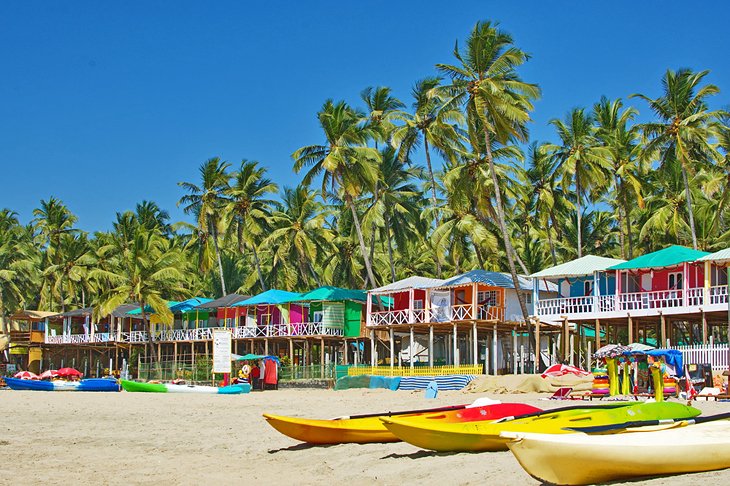
India's not just full of big cities and holy sites–it also has incredible beaches down south in Goa. Its stretches of golden sand along the Arabian Sea offer something for every type of tourist, whether you're interested in hanging out with the backpacker crowd in laid-back beach huts or having a ritzy tropical getaway at a five-star resort.
One unique part of Goa is its blend of Indian and Portuguese cultures. You'll experience the fusion throughout the destination, from its Baroque architecture and cathedrals to its spicy vindaloo curries and seafood dishes.
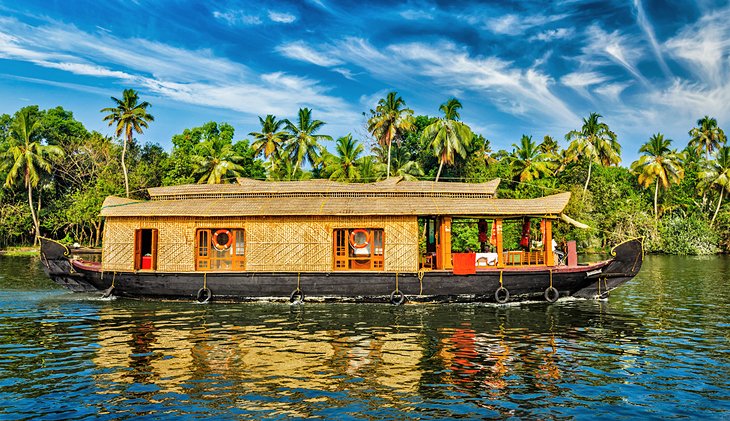
Head south of Goa, and you'll trade beaches for tranquil backwaters in Kerala. Nothing beats the experience of hopping aboard a traditional thatched-top houseboat in Alleppey (also known as Alappuzha ) and slowly floating through palm-fringed lagoons and rivers, either as a day trip or overnight adventure. You'll enjoy freshly cooked Indian cuisine on the water and breathtakingly beautiful natural sights and wildlife.
Easygoing Kerala is like a breath of fresh air from the intensity of cities like New Delhi and Jaipur up north. Schedule some time here when you're in need of a break from the chaos.
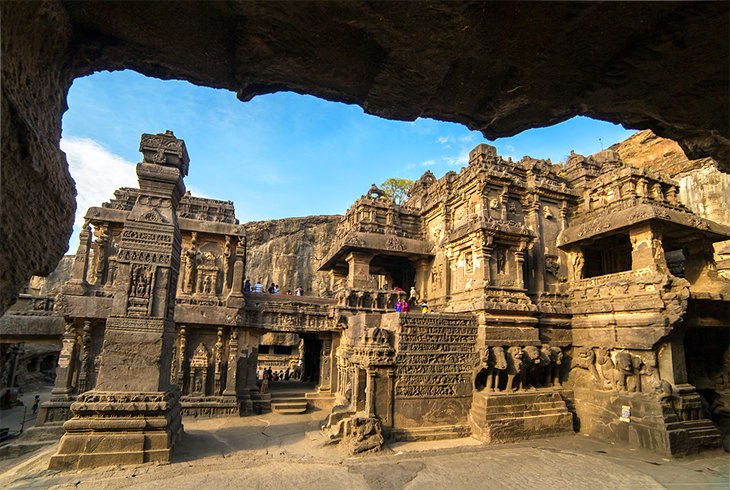
Time travel isn't a reality for travelers quite yet, but you can get pretty close at the Ajanta and Ellora Caves in Maharashtra. Both UNESCO World Heritage Sites , the caves feature intricate carvings from at least 1,500 years ago.
The Ajanta Caves are the oldest of the two attractions, featuring around 30 Buddhist cave monuments cut into the rock as far back as the 2nd century BC.
Around 100 kilometers southwest, the Ellora Caves contain nearly three dozen Buddhist, Jain, and Hindu carvings, the most famous of which is the Kailasa Temple (Cave 16), a massive structure devoted to Lord Shiva that features life-size elephant sculptures . The magnificent carvings at both sites will leave you filled with wonder.
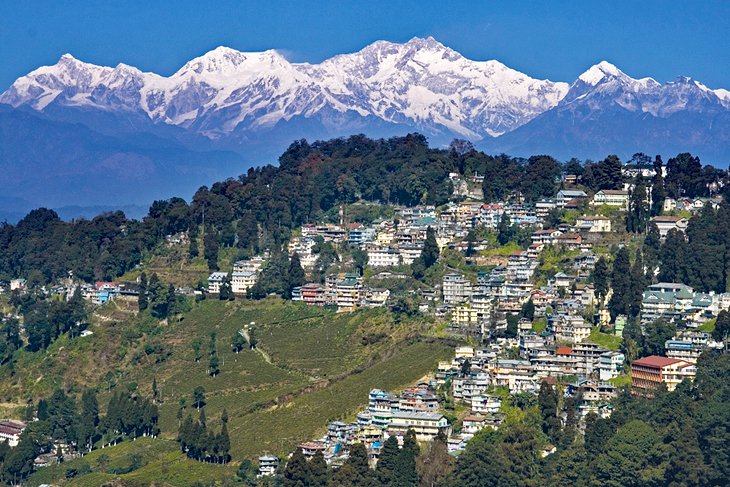
Sightseeing in India doesn't get much better than what you'll discover in Darjeeling. The hill station in West Bengal is beloved for its lush green tea plantations , awe-inspiring snow-capped peaks (including Khangchendzonga , the world's third-highest mountain), and serene Buddhist monasteries. This is the perfect place to arrange a mountain trek or mountain biking adventure.
One of the most popular things to do in Darjeeling is taking a ride on the Darjeeling Himalayan Railway. Powered by an antique steam locomotive, the 140-year-old " Toy Train " takes tourists on two-hour fun rides from Darjeeling to Ghum– a journey that's regularly counted as one of the most scenic train rides in the world.
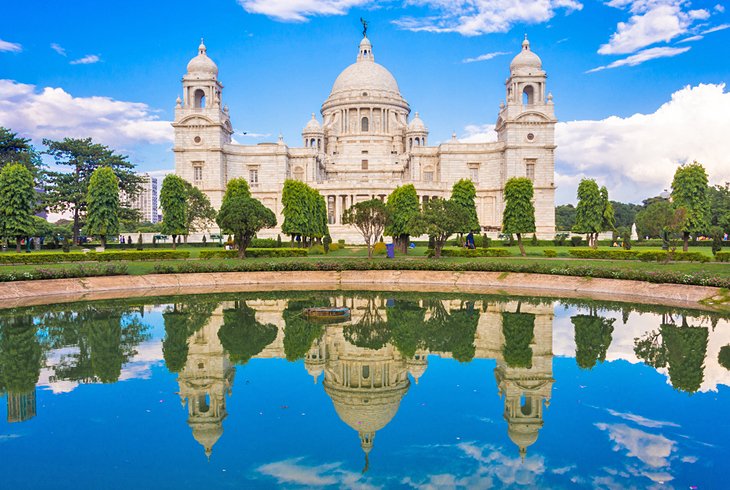
India's third-largest city, Kolkata, is a decaying masterpiece of former British India, brimming with colonial-era architecture . The top things to do in Kolkata include seeing the Victoria Memorial, a white marble monument that features a museum with dozens of galleries, and Park Street, a famous thoroughfare with shops and restaurants that bustle 24/7, especially during the holidays.
But Kolkata is as much about the sites as it is about the emotions. This is a city that will somehow induce every one of your emotions with the highs and lows of life taking place in plain view on every street. Brace yourself, and be open to the experience.
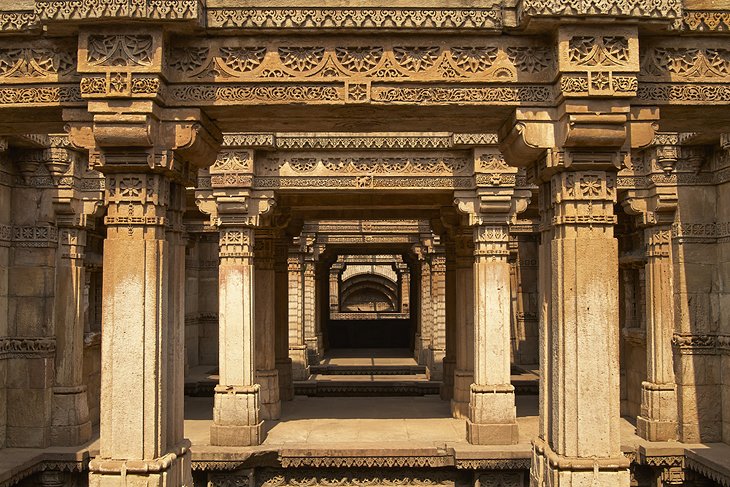
The largest city in Gujarat , Ahmedabad is a noisy, overwhelming metropolis that somehow wins over the tourists who make their way here. The historic city of Ahmedabad earned the coveted title of India's first UNESCO World Heritage City in 2017 for its rich architecture, walls and gates, and significant Hindu and Jain temples.
On the western bank of the Sabarmati River , tourists can wander around Sabarmati Ashram , Gandhi's headquarters from 1917 to 1930. Its museum talks about the life of the Indian hero, and displays his iconic spectacles and spinning wheel. While you're in the city, sample the street food –some say it's the best in all of India.
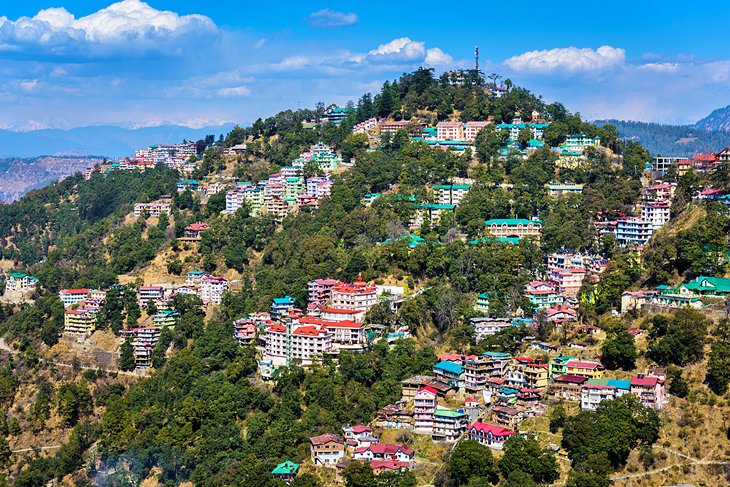
When the temperatures skyrocket in New Delhi and other cities in North India, tourists and locals alike make their way to cooler climates in the hill stations, the most popular of which is Shimla. The cloudy weather and forested hillsides make for a satisfying escape from the heat, as well as a placid place to spend a weekend or more. The atmosphere in the hilly central part of town, where traffic is banned, is just as pleasant as the scenic outskirts.
While you're in the area, make a reservation on the Kalka-Shimla Railway , a UNESCO World Heritage Site. The 96.6-kilometer-long railroad, which has been running for over a century, is renowned for its stunning views and authentic vintage experience.
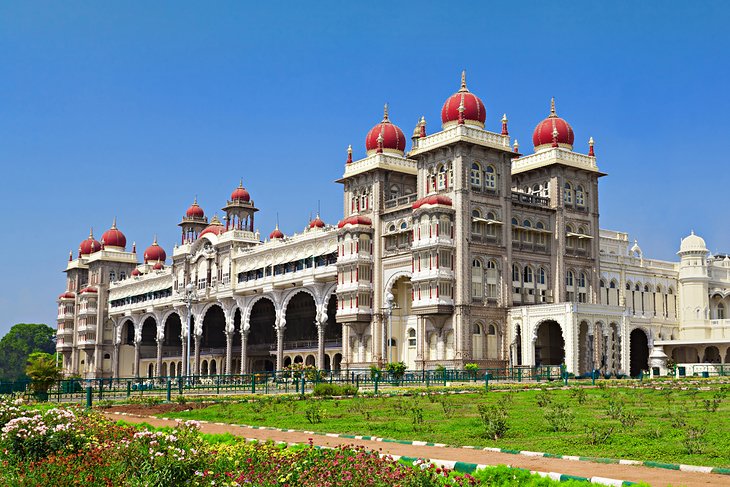
While culturally different, South India is as enchanting as the north–just visit Mysore to see for yourself. The third-largest city in Karnataka is considered to be the cultural capital of the state, celebrated for its high-quality silk , Mysore painting tradition, and hypnotic Hindu temples with deity carvings that nearly touch the clouds.
Most tourists visit Mysore to see its World Heritage-listed palace. This attraction takes Indian grandeur to the next level, with endless mirrored decor, stained-glass windows, carved wooden doors, and intricate mosaic floors that look like the inside of a kaleidoscope. The palace is considered to be one of the country's finest examples of Indo-Saracenic design. Be sure to swing by to see the palace at night, when it's lit up with thousands of twinkle lights.
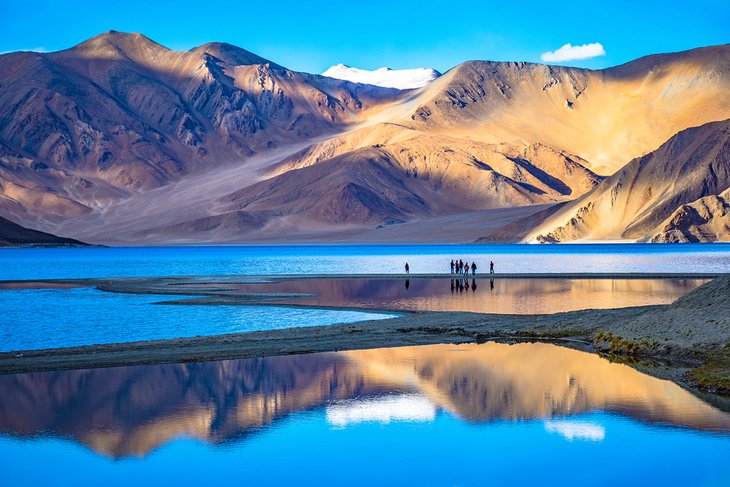
Situated amid the jagged crags of the Karakoram and Zanskar mountain ranges , Ladakh offers tourists the chance to immerse themselves in an awe-inspiring alpine desert. Driving around the region's winding roads comes with one incredible natural view after the next: plunging valleys, gushing rivers, snowcapped peaks, and more. Ladakh's enchanting capital, Leh , stands at 3,500 meters above sea level, so you'll want to spend at least a few days acclimating to the altitude before embarking on any strenuous activities.
Ladakh didn't open to tourists until 1974. Given its difficult-to-reach location and its long-time isolation, the Buddhist-majority region has retained a unique cultural identity and a somewhat "untouched" feel. You'll see Buddhist monasteries and temples all around Leh's Old Town, and countless colorful prayer flags fluttering in the breeze.
Don't miss the nine-story Leh Palace , which dates back to the 17th century, as well as the Shanti Stupa –a monument to world peace. You can also see a superbly sustainable way of life in this traditional community, which receives very little imported goods and remains largely self-sufficient.
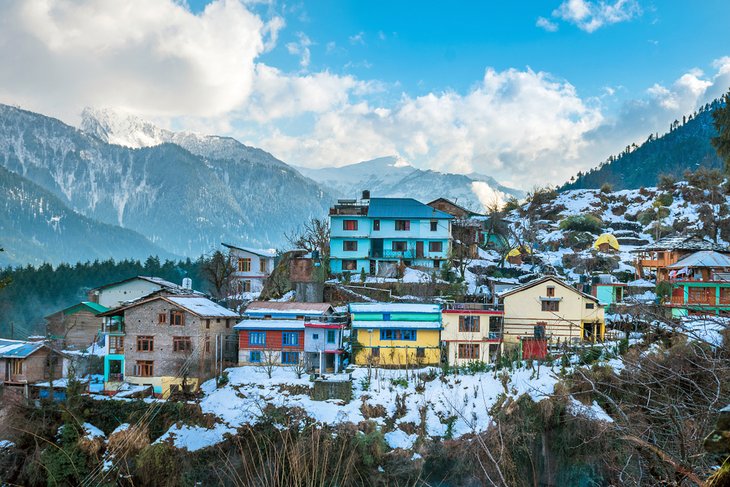
In a country as sweltering as India, it's a relief to find cool weather in hill stations all over the country. Manali happens to be one of the most popular among local and foreign tourists alike. Located in Himachal Pradesh , the high-altitude resort town in the Himalayas makes an easy getaway from Jaipur, New Delhi , or Punjab. The tourist-friendly Old Manali neighborhood brims with chilled-out cafés; great restaurants; and home-stay accommodations, where visitors can experience a local way of life.
Manali is also a convenient base if you want to experience the great outdoors in this beautiful region of North India. From here, you can go trekking in the Parvati Valley, paragliding and mountaineering in the Pir Panjal mountains, and white-water rafting down the Beas River. Outfitters around the town can assist with all the arrangements and gear rentals.
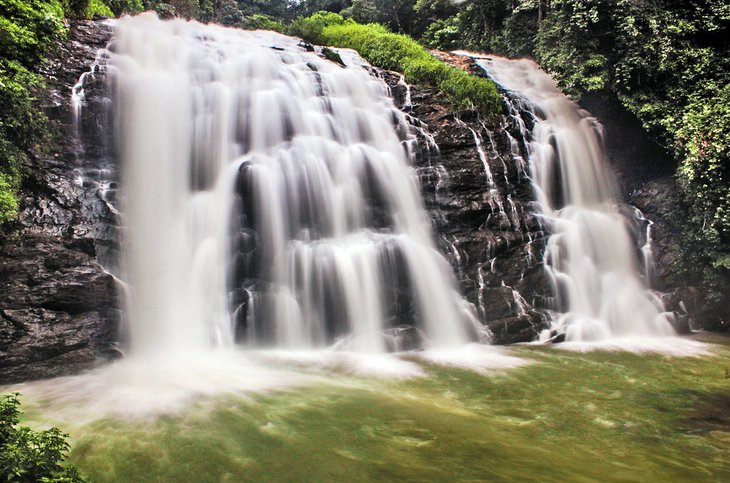
Take one look at Kodagu's hilly emerald landscape perpetually blanketed by a cloud of mist, and you'll instantly see why this hill station is nicknamed "the Scotland of India." Previously called Coorg, the affluent area's biggest draws are its coffee and spice plantations . Tours of historic agricultural sites give tourists up-close views of how these foods are grown and produced. The lush scenery also makes for great bird-watching and trekking , especially in the Western Ghats.
Other popular things to do in Kodagu include seeing the 21-meter Abbey Falls gushing after the rainy season, hearing the chants of young monks at the Namdroling Monastery's famous Golden Temple, visiting the 17th-century Madikeri Fort , and watching elephants take a bath at Dubare Elephant Camp.
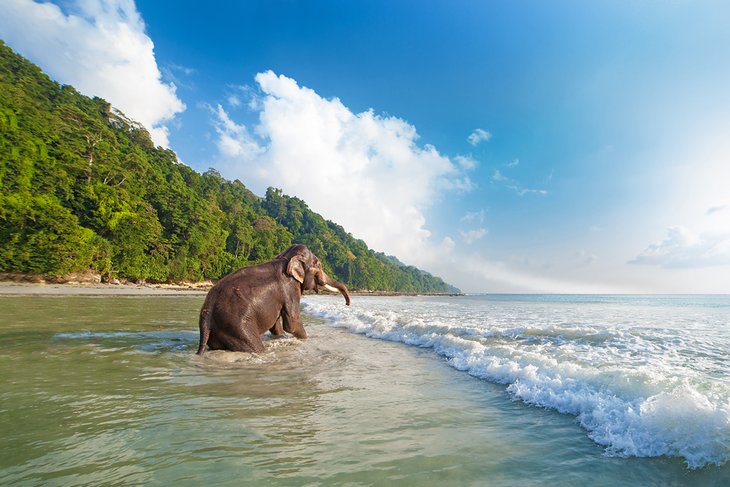
Andaman Islands are the go-to place in India if you're looking for a classic beach vacation. They'll treat you to powder-white sand beaches flanked by coconut palms, pastel-streaked sunsets, the turquoise waters of the Andaman Sea, and dense jungle landscapes. No postcard could possibly capture the majesty of this gorgeous destination.
Its ultra remote location, closer to Indonesia than mainland India, presents challenges for those who want to step foot on one of the few dozen islands open to tourists. You'll need to take a domestic flight from a major Indian city, such as Chennai, New Delhi, or Mumbai . Or, you can brave one of the long-distance ferry rides across the Bay of Bengal .
The effort can be well worth the reward, though. You'll have some of India's best beaches almost all to yourself, and the chance to see rare birds and thriving coral reefs. Culture hounds and history buffs will also relish exploring the Victorian British ruins on Ross Island , which are slowly being engulfed by the jungle.
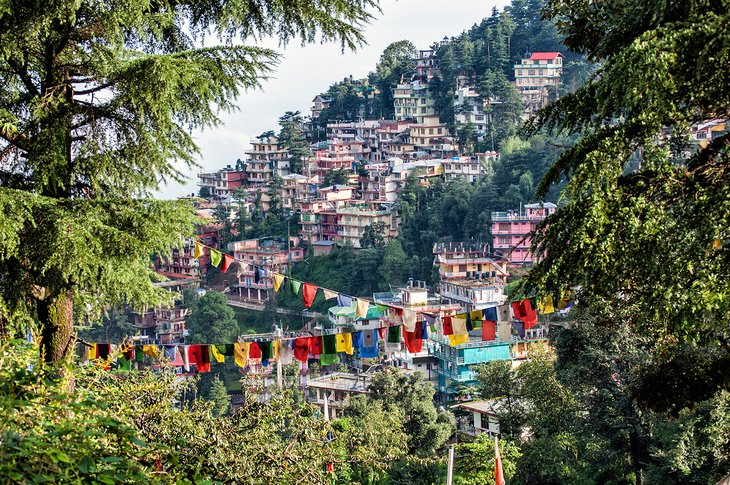
Did you know you can visit the home of the Dalai Lama on a trip to India? The Tibetan spiritual leader's base can be found at the Tsuglagkhang complex , a monastic village in the hill station of McLeod Ganj.
Most afternoons, you can see monks passionately debate one another in the central courtyard. Make your way around the complex to see pilgrims (many of whom are in exile from Tibet) spinning prayer wheels and prostrating in prayer, along with the temple and throne on which the Dalai Lama delivers his teachings. There's also a small Tibet Museum on-site, which gives tourists a deeper understanding of the struggle Tibetans face amid Chinese occupation through moving photo exhibits and a video.
The Tsuglagkhang complex alone makes it well worth a visit to McLeod Ganj, but you can also check out a range of other attractions throughout Dharamsala. Watch artisans teach and practice traditional Tibetan art, like woodcarving and thangka painting at the Norbulingka Institute . Make the nine-kilometer trek up Triund Hill to catch views of the mighty Dhauladhar mountain range. And on your way to the Bhagsu Waterfalls , make a stop at the Bhagsunag Temple to see the ancient sacred pools, believed to be filled with healing waters.

More on India
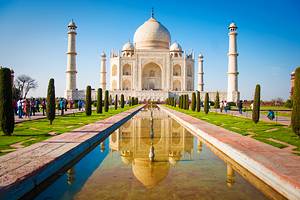
The 22 best things to do in India

Dec 17, 2023 • 22 min read

From photographing the iconic Taj Mahal to soaking up riverside life in Varanasi, here are the best things to do in India © Hitesh Makwana / EyeEm / Getty Images
There are many Indias within India . This land of ancient temples and opulent palaces, forgotten cities and lost traditions, spice markets and spicy food is almost a world unto itself. For many travelers, a visit here is the trip of a lifetime.
Such expectations can make it hard to decide what experiences you should prioritize, and that's exactly why we’ve created this list of the best things to do in India. When planning an extensive India itinerary, keep the following stops in mind.
1. Experience Varanasi at dawn
The best way to experience the timelessness of Varanasi , one of the world’s oldest continuously inhabited cities, is to start just before dawn breaks. At Assi Ghat , the devotional Ganga Aarti ceremony performed on the banks of the Ganges will mesmerize as participants intone rhythmic chants and hymns on the steps that descend to the holy river.
Next, take to the water in a small boat, watching the sun rise as life slowly starts to stir along the river. Suddenly, there will be a burst of activity as saffron-clad sadhus (holy men), vendors, devotees and tourists begin performing rituals, including yoga and ritual singing. A boat ride along the Ganges will pass the main Dashashwamedh Ghat toward Manikarnika Ghat , where funeral pyres burn as the dead are cremated. In Varanasi, death is a way of life.
Planning tip: We recommend a visit to an akhara (wrestling center) to see wrestlers practice their traditional sport in a mud pit in the early morning light. End your tour with some soulful food: a typical Varanasi breakfast of kachoris (deep-fried pastries) stuffed with lentils and served with spicy potato gravy. Finish the meal on a sweet note with melt-in-mouth jalebis (fried whorls of dough).
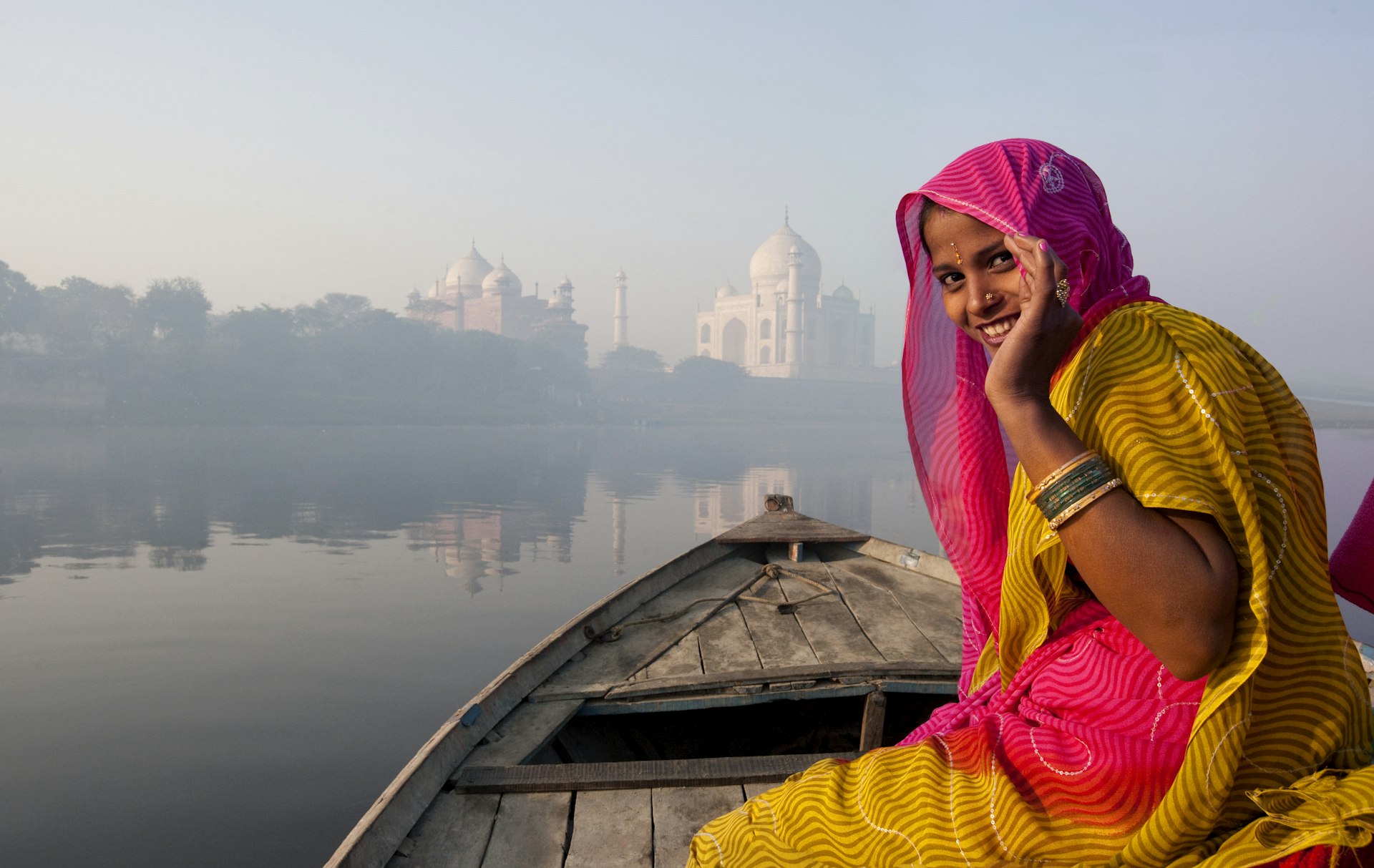
2. Set your eyes – and lens – on the iconic Taj Mahal
The iconic, romantic symbol pictured on every India travel brochure, the Taj Mahal in Agra really is a reliable highlight of any trip here. Despite incessant tourist crowds, you can't help but gaze in wonder at this marbled mausoleum built by Mughal emperor Shah Jahan for his wife, Mumtaz.
While it’s hard to get a bad shot of the Taj, the most vivid photos are usually taken at sunrise and sunset from Mehtab Bagh , the Mughal garden across the Yamuna River. Arrive just before dawn and watch the colors change on this sublime monument dedicated to eternal love. Over the course of a day, the sun paints the marble in different hues, transforming the dome from pale pink at sunrise to orange at sunset.
Pay a visit to the eye-catching tomb of Itimad-Ud-Daulah – a precursor to the Taj Mahal, constructed in the 1620s and dubbed the “Baby Taj” – created for Mumtaz’s grandfather, Mirza Ghiyas Beg by his daughter, Nur Jahan.
Planning tip: Special tickets are sold for visits on an evening with a full moon. They can be bought in person 24 hours in advance at the Archaeological Survey of India (ASI) offices on Mall Road, and you will need to bring your passport as ID.
3. Demystify the Kama Sutra story behind Khajuraho
As you stand in front of erotic sculptures of figures locked in improbable positions at Khajuraho , you can almost feel the passion. Perhaps no other heritage destination evokes as much wonder and curiosity as these famous temples, built nearly 1000 years ago. And yet guides will painstakingly tell you that barely a tenth of the master carvings in the 22 temples that have been excavated here are dedicated to the Kama Sutra .
As you immerse yourself in these three-dimensional narratives, you can decide for yourself why the Chandela, an ancient Rajput clan, chose to depict eroticism on the walls of their temples, which are dedicated to both Hindu and Jain deities. Be sure not to miss one of India’s oldest surviving Tantric temples, dedicated to the Chausath Yogini – the 64 Tantric goddesses. The cells may be bereft of the idols, yet the architecture, in ruins, is fascinating.
Planning tip: You will need a day to explore all of Khajuraho’s temples; start as early as possible to capture the dawn light in your photos, or come in the afternoon when the warm sunlight makes for evocative shadows.
4. Explore the world’s largest mangrove forests in the Sundarbans
The wild and remote biodiversity hotspot of Sundarbans National Park is where three mighty rivers – the Ganges, Brahmaputra, and Meghna – join the Bay of Bengal. A maze of mangrove forests, swamps and mudflats, riverine islands and numerous canals that you can explore by boat, the Sundarbans is perhaps most famous for its population of Bengal tigers that roam its brackish channels.
With its serpentine network of roots, the dark and dense undergrowth provides hiding spots for crocodiles, snakes and other predators. Look out for the different varieties of kingfishers, raptors and water birds from observation towers that give you a bird’s-eye view of the swamps. Village walks are possible on a handful of islands and resilient locals will tell you harrowing tales of living amid devastating cyclones and treacherous wildlife in this delicate and unforgettable ecosystem.
5. Camp under the stars in the Thar Desert of Rajasthan
With an entire galaxy to keep you entertained for the night, sleeping among the wavy, undulating sand dunes of Rajasthan ’s Thar Desert is something that stays with you forever. Near Jaisalmer , a number of desert camps are pitched across the windswept Sam Sand Dunes , which rise to more than 50m (164ft) in height and create magical mirages before your eyes. Go on a camel safari along with a caravan to experience the sunset as you’ve never seen it.
Planning tip: In town, take an unmissable wander through the old temples and colorful markets of majestic Jaisalmer Fort , which 5000 people still call home. If you’re fascinated by the supernatural, head southwest of the walled city to the abandoned ghost town of Kuldhara – it's said to be haunted, especially after dark.

6. Feel the presence of the divine at the Golden Temple, Amritsar
The best time to experience Amritsar ’s sublime Golden Temple is at 4am (5am in winter) when the revered scripture of Sikhism, the Guru Granth Sahib, is installed inside the temple for the day amid the hum of ritual chanting. With the moon still shining, the entire complex is lit up as the shimmering gold of the dome reflects in the surrounding pond, Amrit Sarovar (the Reservoir of Nectar).
Hospitality and charity are key values for Sikhs, and this famous gurdwara (place of worship) is open to anyone of any faith. The incredible community kitchen known as the Guru-Ka-Langar offers simple, vegetarian meals throughout the day for up to 100,000 devotees (meals are free but a donation is appropriate).
7. Cruise the Kerala backwaters
A maze of small canals, brackish lagoons, silent rivers and still rivulets interconnected with the Arabian Sea, the backwaters of Kerala offer a completely different view of India for travelers and a lifeline of farming and fishing for locals. You can choose your own adventure as you make your way through this tangle of channels and lakes.
During an overnight cruise on a kettuvallam (houseboat), you can pass the hours by fishing, visiting small villages, bird watching or sitting back and watching the world go slowly by.
Planning tip: Many cruise itineraries start in Alappuzha , to the south of Kochi , but the quality of houseboats varies significantly – your best bet is to head to the dock and view a selection of houseboats one or two days in advance. If you’re booking online using an aggregator such as Booking.com , be sure to read plenty of reviews before you book.
8. Visit the ancient monasteries of Ladakh
Touching the high Himalayas, the mountain valleys of Ladakh leave people breathless – both figuratively and literally. You’ll need time to acclimatize in this state that was once a Buddhist kingdom, with stark and vivid landscapes that sit between 3000–6000m (9842–19,685ft) above sea level.
Dotted with snow-clad mountains, icy glaciers, wild meadows, and valleys in the lowlands, plus rivers and high-altitude lakes that change color depending on the light, the region is a natural playground for hikers , bikers and adventure enthusiasts. In winter, travelers come here for expeditions to seek snow leopards and treks along the frozen Zanskar River.
Chortens (Tibetan Buddhist stupas) and gompas (Tibetan Buddhist monasteries) are scattered across this cold desert and visiting these sacred sites will help you learn more about the traditions of Tibetan Buddhism. The region’s oldest monastery is at Alchi, though Thiksey , Stok , and Hemis gompas, closer to the capital Leh , are the most popular stops for visitors.
Planning tip: Don’t miss views of Ladakh’s moonscapes from Lamayuru Monastery , a convenient stop when traveling west from Leh to Srinagar in Kashmir . Remember to cover your shoulders and legs while visiting the monastery, and observe the ban on photography within the premises.
9. Spend a day at Raghurajpur Arts and Crafts Village in Odisha
Located near the temple town of Puri in Odisha , the colorful Raghurajpur Arts and Crafts Village is a living gallery maintained by local chitrakaars (folk artists). The village showcases the traditional art of pata chitra painting, paying tribute to the triad deities from the Puri Jagannath Temple . Each canvas is specially prepared with layers of cotton cloth, and tribal motifs, folk stories, myths and legends are the subjects of the artworks. Expect the artists here to invite you into their homes to see the murals that cover the walls.
As well as pata chitra , you can see tussar silk paintings, toys and palm-leaf engravings. You can also see live demonstrations or try your hand at creating your own piece of art. Try to see a traditional performance of the Gotipua dance; young men from the community can be seen practicing at local gurukul (dance academies).

10. Explore the ruins of Hampi
If the ruins of Hampi could speak, they would tell a glorious tale of a powerful and prosperous kingdom whose rulers built magnificent temples, palaces and monuments, traded precious stones in vast bazaars, and contributed immensely to the art, architecture, culture and literature of India. Founded 600 years ago by two brothers, working under the guidance of their spiritual guru, Sri Vidyaranya, Hampi was once the capital of the Vijayanagar Empire, which ruled the Deccan Plateau of South India for centuries.
The site sprawls for miles, centered on several important groups of monuments, including the Royal Enclosure and the Temple Trail. The still-active Virupaksha Temple is the nucleus of spiritual activity at Hampi, but the most striking structure is the Vittala Temple , an architectural marvel featuring an elaborately carved stone chariot that is illustrated on India’s 50-rupee note.
Planning tip: Allow at least three to four days to fully explore this special place. The center of Hampi can be explored on foot; to explore surrounding areas, rent a bicycle or motorbike, or hire an auto-rickshaw on either side of the Tungabhadra River.
11. Explore Goa beyond the beaches
Goa is not just a destination; it’s a state of mind. The very name evokes images of sun, sand and sea, and while Goa’s beaches are the main attraction here (tip: opt for the less-crowded shores of South Goa ), the small state’s riverine islands, mangrove swamps, dense forests, and spice and cashew plantations are memorable and sensuous experiences in themselves.
Cruise the Zuari River and narrow canals bordered by mangroves at dawn to spot six varieties of kingfishers, among other water birds. In the inland forests, hidden temples reward hikers. For more nature, visit Mollem National Park and Bhagwan Mahavir Wildlife Sanctuary with its mighty Dudhsagar Falls – especially post-monsoon, when they’re at full force.
12. Be dazzled by the Rann of Kachchh salt desert
Be sure to pack your sunglasses: the sparkling sodium chloride crystals of the White Rann, one of the world’s largest salt deserts, will literally dazzle you. The Rann of Kachchh (Kutch) in Gujarat is divided into the Greater and Lesser Rann (the White Rann is part of the former), a unique ecosystem in which shallow salt marshes are submerged during the monsoons. As they evaporate, the wetlands transform into an arid ocean of salt, a seasonal phenomenon seen only in winter, from October to March.
We recommend staying in Hodka or Dhordo, where resorts are composed of Kutchi (Kutch-style) bhungas – circular-walled thatched mud huts that offer a welcome respite from the harsh desert heat. While you’re in the area, head to the nearby ruins of the ancient Indus Valley civilization at Dholavira to the east, and the 18th-century Aaina Mahal Palace in Bhuj, to the southwest.
Planning tip: The landscape is especially mesmerizing at sunrise and sunset; evening visits during full-moon evenings are another treat. Gujarat Tourism hosts the annual Rann Ustav , a fascinating cultural festival that runs between November and February. Expect a flood of food and local handicraft stalls as well as Sufi and indigenous Kutchi folk music performances.
13. See larger-than-life sculptures at the Great Living Chola Temples
Located in Tamil Nadu , the 1200-year-old Great Living Chola Temples leave visitors both spellbound and humbled. These mighty monuments include Brihadeeshwara Temple in the southern city of Thanjavur , built by King Raja Raja Chola I in the 10th century. The soaring 63.4m-high (208ft) vimana (tower above the shrine) is one of the largest of any Hindu temple anywhere, hence its nickname, the Big Temple.
Raja Raja Chola I’s son, Rajendra Chola, ambitiously set out to create a bigger version of his father’s temple at Gangaikonda Cholapuram , but for mysterious reasons never completed the complex. A century later, in a small town called Darasuram, the third temple was erected by Raja Raja Chola II. If the first two Brihadeshwara temples are larger-than-life marvels, the Airavateswarar Temple is an ode to mastery on a smaller scale and a tribute to the craftsmanship of the era. Each of the temples is dedicated primarily to Shiva, although carvings depict a pantheon of other Hindu deities.
Planning tip: You’ll need a day to explore all three temples, which are still in active use. It's best to visit either early in the morning or in the evenings.
14. Discover hidden treasures in the villages of Chettinadu
A cultural and colorful mosaic of arts, crafts, architecture, food and traditions, Chettinadu is a collection of 75 villages in Tamil Nadu that were once home to an affluent mercantile community called the Nagarathar Chettiars. The merchants grew rich off trading in jewelry and spices; when most of them left for better prospects elsewhere, they left behind their homes – a cultural reminder of their cosmopolitan community and the wealth they accumulated.
Aptly titled nattukottai (country forts), each home is a larger-than-life fortified palace; some cover more than 3700 sq meters (39,826 sq ft). Colorful facades feature arches, pillars, sculptures and friezes but it’s the interiors that truly amaze, with Belgian mirrors and chandeliers, Italian marble, Japanese artworks, Spanish tiles, Burmese teak and other luxurious components sourced from around the world.
Villages such as Karaikudi, Kanadukathan, Devakottai, Kothamangalam, Pallathur and Kottaiyur feature grand houses that are up to 200 years old. While most of them have been abandoned, a few have been converted into luxury hotels. A fusion of Art Deco, Dravidian and colonial architectural styles, these houses are fascinating to explore and some can be entered for a small fee.

15. Look for India’s Big Five
On thrilling 4WD safaris through the dense forests of wildlife sanctuaries, you can look out for India’s Big Five : tigers, elephants, leopards, sloth bears and gaur (Indian bison). There are more than 100 national parks and tiger reserves spread across the country, including venerable Jim Corbett National Park ; Kanha , Bandhavgarh and Panna in Madhya Pradesh ; Pench and Tadoba-Andhari in Maharashtra; Ranthambore in Rajasthan; Nagarhole and Bandipur in Karnataka ; Mudumalai in Tamil Nadu, and many, many more.
Farther afield, Kaziranga National Park in Assam provides sightings of the critically endangered one-horned rhinoceros, while elusive snow leopards populate Hemis National Park in Ladakh and Asiatic lions congregate in Gujarat’s Gir National Park . The Kabini Reservoir in Karnataka draws massive herds of elephants, especially in summer; bird watchers are also in for a delight as more than 1300 species are found here.
Planning tip: Throughout the country, early-morning safaris tend to be the most rewarding, although evening safaris bring magic light. Late summer is the best time for spotting wildlife, but many national parks are closed during the early-summer monsoon. Many parks offer elephant safaris, but these are not recommended as carrying passengers can be harmful to elephants.
16. Get a taste of “orthodox tea” country in Darjeeling
The quaint, verdant hill station of Darjeeling , West Bengal is an idyllic town, towered over by snow-capped Himalayan peaks, nestled amongst rolling hills of rhododendron and pines, and overflowing with tea plantations. Although Indian-style chai is readily available, this is “orthodox” tea country – the term refers to loose-leaf tea that’s brewed in a teapot with hot water, unlike chai, which is made from CTC (crush, tear, curl) tea. With plenty of hole-in-the-wall cafes and eateries within the town, and hiking trails and Buddhist monasteries nearby, Darjeeling offers a welcome change of pace for every palate.
Similarly, Kangra – another important Indian tea-growing region in Himachal Pradesh – offers relaxed views of Himalayan foothills that can be easily reached via the nearby hill station of Dharamshala , and the adjacent settlement of McLeod Ganj. Currently, Dharamshala is home to the Dalai Lama and the exiled Tibetan government, and the town is rich with Tibetan influence.
Planning tip: The famous narrow-gauge Toy Train to Darjeeling runs uphill from New Jalpaiguri station, following the Darjeeling Himalayan Railway, a UNESCO World Heritage Site. Many tourists opt for two-hour 'joy rides' on the steam locos from Darjeeling to Ghum (India's highest railway station) and back. October to January are peak months for the Toy Train, so book your seats in advance via the IRCTC website .
17. Travel on a sleeper train
Strikingly scenic and luxuriously slow, rail travel in India offers a pleasant change of pace from the vibrant cacophony of urban tourist hubs. Heading from Delhi to Rishikesh via the overnight Shatabdi train, carefully poke your head out to watch the length of the train curve through the rural countryside. As the views roll by, expect to be generously supplied with railway snacks – from samosas and poha (flattened rice) to full meals, if you so choose – and topped up with extra hot, extra sweet chai , as chaiwalas saunter by with a kettle and paper cups.
If you’re looking to explore southwestern parts of the country, there are several dramatic train routes connecting the busy city of Mumbai with the historic port city of Kochi , whooshing past swathes of the lush green Konkan region and offering glimpses of the Arabian Sea.
Planning tip: Seats on popular routes fill up fast, so it’s worth booking your ticket online in advance via the IRCTC website. For maximum privacy and comfort for long overnight journeys, book an AC-class ticket (you can choose from four-bed, three-bed or two-bed cabins). If you’re keen to meet local people, opt for a Sleeper class ticket (but don’t expect to get too much sleep). Although you’ll find sit-down toilets on board, it’s advisable to carry your own toilet paper.
18. Practice Yoga in Rishikesh
Tucked away in the Himalayan foothills upon the banks of the Ganges, Rishikesh is a renowned spiritual hub, famed for its ashrams and yoga and meditation centers. Beyond the oft-discussed “Beatles Ashram” – a now-abandoned ashram visited by the Beatles in the '60s when they were learning Transcendental Meditation – Rishikesh is also the setting for the annual International Yoga Festival in March.
There are a plethora of yoga courses available, taught by both Indian and foreign teachers. For beginners, we recommend signing up for a course at the Sivananda Ashram , where you can learn surya namaskars (sun salutations) and basic asanas on the river bank. There are also several women-only yoga courses available, at a variety of price points.
Planning tip: If you’re planning to visit during the International Yoga Festival, book yourself a spot online . Most yoga centers are located between Ram Jhula and Laxman Jhula, so book your accommodation at least a few months in advance. Note that Rishikesh is a vegetarian city; for non-veg dishes, head to the nearby town of Haridwar .
19. Immerse yourself in the diversity of northeastern India
Considering how diverse the northeastern states of India are, it seems almost unfair how frequently they are grouped together. India’s northeast has an offbeat experience for every traveler, from the annual Hornbill Festival in Kohima, Nagaland , which showcases the ethnic diversity of the state’s 17 main tribes every December, to the unparalleled views of 8586m (28,169ft) Khangchendzonga (the world’s third-highest mountain) from Gangtok in Sikkim .
We recommend starting your tour of the region in Guwahati in Assam, heading on a safari to Kaziranga National Park , where you can see one-horned rhinos, and then traveling onward to Majuli, the world’s largest river island. In Meghalaya , start in Shillong and loop towards the scenic town of Cherrapunji, lush with waterfalls and living root bridges – wondrous pedestrian bridges engineered by intertwining rubber tree roots over time. Further northeast, Arunachal Pradesh’s atmospheric Ziro Valley offers beginner-friendly treks through bamboo and pine forests.
Planning tip: The busiest time to visit the northeast is March to June when there’s still a slight coolness in the air. Accommodation during these months is more expensive; if you’re looking for a more affordable trip, the weather during the summer months – with the exception of lowland areas affected by the monsoon – is pleasant too.
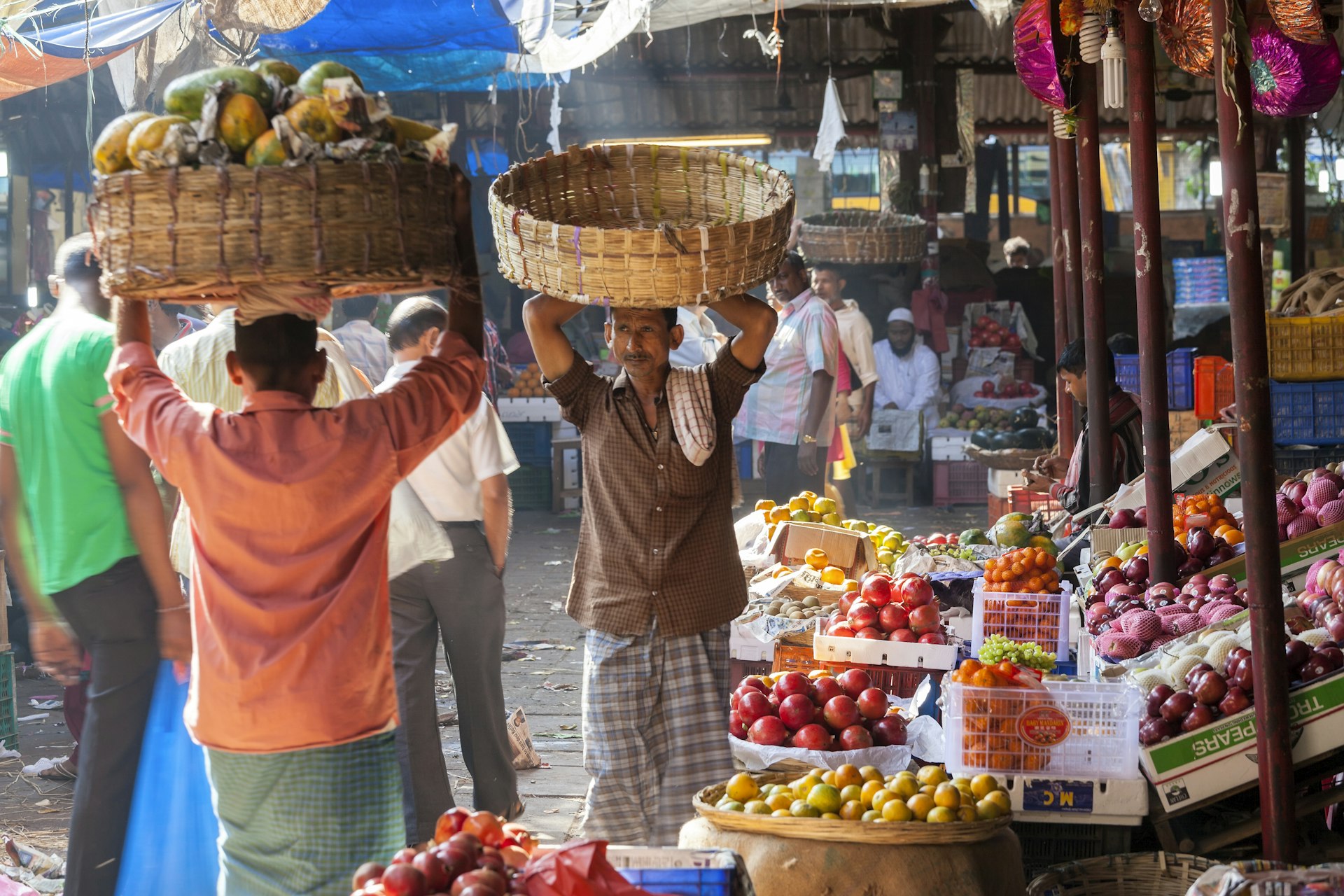

20. Visit a bustling local market
Wherever you go in India, from Kashmir in the north to the tip of Kanyakumari in the south, no trip would be complete without a visit to a market. This is true whether you take a shikara (wooden boat) to watch the chaos of the early morning floating vegetable market on Dal Lake in Srinagar or go bargaining for jhumkas (earrings) in Chandni Chowk in Delhi.
Markets in India are worth visiting partly because they’re authentically Indian – they’re frequented by local people year round, regardless of whether tourists visit them or not. We recommend starting off with a few of Delhi’s favorite bazaars – browse for clothes and attars (scents) in Chandni Chowk, Tibetan-style jewelry in Majnu-ka-Tila, and spices in Khari Baoli, Asia's largest spice market (your clothes will smell of ground cinnamon and cardamom for days, even after being laundered). Other rewarding markets include Mysore’s Devaraja Market , Jaipur ’s Johri Bazar, and Kolkata ’s Mullick Ghat – Asia’s largest flower market.
Planning tip: Markets are high pedestrian traffic areas and can be overwhelming; new-to-India travelers may want to book a guided tour. Be sure to keep your valuables in a concealed money belt (or similar), as pickpockets are common in these markets.
21. Tour Rajasthan’s historic forts and palaces
Thanks to a rich history of intertwined kingdoms and local battles, Rajasthan is home to some of India’s most spectacular forts and palaces. Over the centuries, neighboring kingdoms tried to one-up each other in fabulous displays of ostentation, and fought countless battles amongst themselves and against outsiders. It was only in the mid-1500s that the region – then called “Rajputana” – was brought together under the Mughal emperor Akbar.
Start with the Amber Fort in Amer (outside Jaipur) with its honeyed pink-and-yellow walls standing stark against cloudless blue skies. Inside, the palace walls are intricately painted, and the Sheesh Mahal (Mirror Palace) brings the stars indoors as candlelight twinkles on mirror mosaics. Other forts and palaces to check off your list include Mehrangarh in the blue city of Jodhpur , Ranthambhore Fort inside Ranthambhore National Park , Chittor in Chittorgarh, and Kumbhalgarh in the Aravali Hills.
Planning tip: Plan to visit Rajasthan when the weather is at its coolest, between October and March. Keep some small change handy for camera fees if you want to use a camera inside most fort complexes (you can often shoot on your phone for free). Although many forts (including Amber Fort) offer elephant rides for sightseeing, these have been banned by the government since 2005 as they are harmful to elephants.
22. Experience the energy of India’s festivals
With an almost impossibly diverse population, religion is the core of India’s social fabric, and religious festivals pulse through the country’s calendar. Celebrated enthusiastically by the majority Hindu population, Holi – the festival of colors in the spring – and Diwali – the festival of lights – are major events across the country. In the east, Durga Puja is a grand celebration of the Hindu goddess Durga and brings Kolkata to a standstill.
Similarly, Ganesh Chaturthi – celebrating the elephant-headed Hindu god Ganesh – is of paramount significance in Mumbai , where crowds accompany giant statues of the deity as they are paraded through the city and submerged in the sea.
The Muslim celebrations for Eid (at the end of the fasting month of Ramadan) are memorable in Delhi, Lucknow, Mumbai, and Hyderabad – people open up intricate late-night markets and street-food stalls showcasing Muslim delicacies native to each area.
There are dozens of other region- and religion-specific festivals, so be sure to do your homework on festival dates. The harvest festival of Onam brings bursts of color across the southern state of Kerala in August or September. If you’re headed to Ladakh or other places with large Tibetan Buddhist populations such as Dharamshala or Arunachal Pradesh, the Tibetan New Year festival of Losar in February or March brings three full days of festivities, including masked Buddhist dances at monasteries.
Planning tip: Many Indian festivals follow the lunar calendar, so dates change every year. Islamic festivals move forward by 11 days each year, relative to the Gregorian calendar. Always check the dates of festivals locally to avoid missing significant events.
This article was first published April 2022 and updated December 2023
Explore related stories
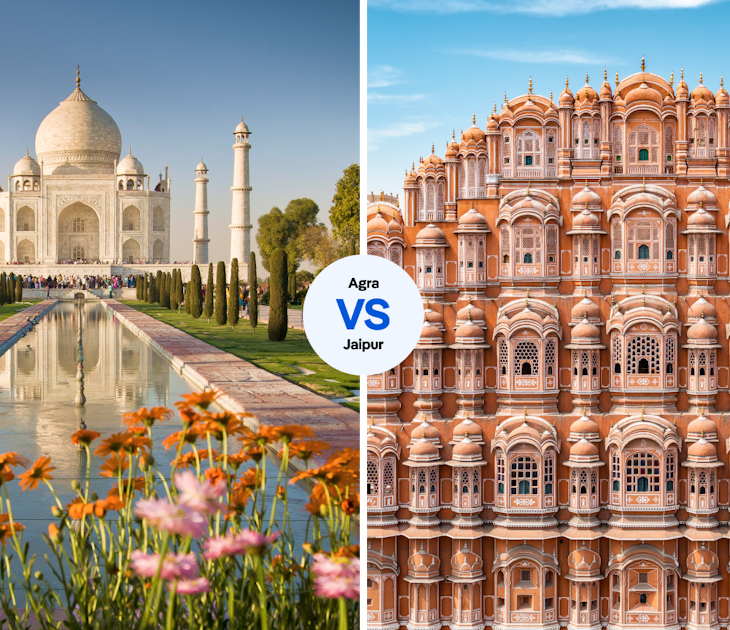
Apr 18, 2024 • 6 min read
Trying to decide between Agra, home to the unrivaled Taj Mahal, and Jaipur, Rajasthan's regal Pink City? We can help.

Mar 29, 2024 • 6 min read

Apr 21, 2022 • 7 min read

Feb 1, 2022 • 6 min read

Jan 19, 2022 • 7 min read
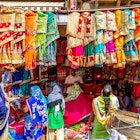
Oct 18, 2021 • 8 min read

Jan 28, 2021 • 5 min read

Dec 2, 2020 • 4 min read

Oct 16, 2020 • 4 min read
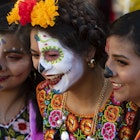
Aug 9, 2020 • 4 min read
Awesome, you're subscribed!
Thanks for subscribing! Look out for your first newsletter in your inbox soon!
The best things in life are free.
Sign up for our email to enjoy your city without spending a thing (as well as some options when you’re feeling flush).
Déjà vu! We already have this email. Try another?
By entering your email address you agree to our Terms of Use and Privacy Policy and consent to receive emails from Time Out about news, events, offers and partner promotions.
Love the mag?
Our newsletter hand-delivers the best bits to your inbox. Sign up to unlock our digital magazines and also receive the latest news, events, offers and partner promotions.
- Los Angeles
Get us in your inbox
🙌 Awesome, you're subscribed!

25 of the best places to visit in India
Spanning cities, desert, beach, jungle and Himalaya, these are the places in India you must visit at least once

Its no secret that India is a gem when it comes to diversity and charm. From the snow-covered Himalayas to the golden dunes of the Thar Desert, this country makes for a radical collision of terrains, cultures and wildlife. As far as holiday destinations go, few are as fascinating. And in fact, whether you’re in search of royal splendor, a chilled-out beach hideaway, a jungle safari, a vibrant city break or just a healthy dose of history, you’ll be raving about any trip here for years to come.
Visit Kashmir if you're looking for a dose of natural beauty coupled with snow for some mesmerizing views. Get on a motorbike to make a trip to Ladakh for that adrenaline rush. Roam around the capital of Delhi for some mouth-watering food and Mughal architecture. Take a tour of the state of Rajasthan if ancient palaces, deserts and endless shopping excites you. Go down to the south for beaches, tea gardens, centuries old temples and some wildlife sanctuaries.
Discover India:
🛎️ The very best hotels in India 🛣️ Unmissable road trips in India
An email you’ll actually love
The best places to visit in India

1. Mumbai
The birthplace of Bollywood. Flashy seafront promenades. Impressive Raj-era architecture. Mumbai is a buzzing metropolis of more than 20 million people and a definitive stop on any India itinerary. Upmarket SoBo or South Bombay is home to the art quarter of Kala Ghoda, upscale restaurants and shopping in Colaba, and architectural icons like the Chhatrapati Shivaji Teminus. Further north, most travellers make a beeline for the up-and-coming seaside neighbourhood of Bandra, which boasts old-world churches, trendy restaurants and thriving nightlife.
Discover Mumbai: 📍 The most amazing things to do in Mumbai 🍸 Brilliant bars and pubs in Mumbai 🗺 What to do in Mumbai’s coolest neighbourhood 🌱 Incredible Mumbai parks 🥣 Mumbai’s best restaurants

2. Delhi
India’s beautiful, sometimes overwhelming capital feels like a microcrosm of the country as a whole, with its diversity of food, craft and cultures. However, it holds its own thanks to a high concentration of historic buildings, museums and plenty of calming green space. Hectic Old Delhi is a labyrinth of narrow alleys packed with delightful markets and street food, but it’s the grand Mughal-era monuments of Red Fort and Jama Masjid that truly dazzle. In New Delhi, trendy shopping and dining precincts such as Khan Market sit alongside historic venues like the tomb-studded Lodhi Gardens.
Discover Delhi: 📍 The best things to do in Delhi 🥣 The best Delhi street food 🌱 Beautiful parks in Delhi 🛍 Must-visit Delhi markets 🛎 The best hotels in Delhi

3. Goa
The palm-fringed, seaside state of Goa is known for its lively beaches, bars and binge-worthy seafood. Popular beaches such as Vagator and Anjuna are home to casual shacks on the sand, as well as slick resorts, flea markets and plush nightspots. Since its days as a hippie haven in the 1970s, Goa has evolved into very much the sophisticated tourist destination – to see this side of the state, roam colonial-era architecture in the Latin Quarter of Fontainhas, or go bird watching amid sprawling mangroves at the Salim Ali Bird Sanctuary.
Discover Goa: 📍 Great things to do in Goa 🏖 Goa’s best beaches 🎤 The best nightlife spots in Goa

4. Jaipur
The ‘Pink City’ earned its name from the salmon-hued façades of its Old City, of which the most striking examples are the grand City Palace and Hawa Mahal. Explore the vibrant markets of Johari Bazaar and Bapu Bazaar, however, and you’ll find every colour imaginable in block-printed cotton fabrics, dazzling embroidered bedspreads and leather jutti footwear. Rajasthan’s capital still retains its royal heritage – just check out formidable hilltop fortresses Amer and Nahargarh, or the host of luxurious ‘palace hotels’.
Discover Jaipur: 📍 The best things to do in Jaipur

5. Chennai
Once known as Madras, Chennai has a special place in India ’s cultural and artistic heart. You can find c lassic South Indian fare, fashion and warm hospitality in the historic centre of Mylapore and the seaside of Marina Beach. Looking to let off some steam? Best head to nearby party town Mahabalipuram. If you want to understand how ancient India lives on within a bustling urban city, then Chennai is the spot.
Discover Chennai: 📍 Unmissable things to do in Chennai

6. Pondicherry
People are drawn to Pondicherry (also known as Puducherry) for many reasons. The city was a French colonial settlement until 1954, and this history is reflected today in the city’s distinctive architecture, culture and food scene. Some come to Pondicherry to admire the heritage buildings, others to soak up the sun and salt at the beach or get active with adventure pursuits.
Discover Pondicherry: 📍 The best things to do in Pondicherry

7. Manali
An ever-popular mountain resort town in the state of Himachal Pradesh, nestled amongst high peaks in the alluring lush green Beas valley, Manali is one of the most popular tourist spots in northern India. Visitors come for trekking, climbing, skiing and rafting, to take in the stunning views, mountain air and snow. It attracts plenty of backpackers too, seeking to chill out in the hippie villages surrounding the town.
Discover Manali: 🛎 The best hotels and places to stay in Manali

8. Pune
Pune is often seen as being in Mumbai ’s shadow – it’s just three hours away by car – but this Indian destination is exciting in its own right. Thanks to its massive student population and the influx of expats who’ve been drawn to the cooler, less polluted and less crowded town, Pune is an awesome place to explore. History and culture abound, of course, but exciting restaurants and pubs make it even more vibrant.
Discover Pune: 📍 The best things to do in Pune

9. Shimla
This delightful north Indian hill station, one of the country’s smallest cities, attracts holidaymakers from all over India and beyond. As well as a pleasant, cooler climate in summer – and occasional snow in winter – it’s clean and green. Shimla is situated at 7,100ft, with access by twisting roads or the popular narrow-gauge ‘toy train’. The most well-known landmark is the main street, Mall Road: a pedestrian-only walkway, with a variety of shops and restaurants on one side and views across the valley to the other. Everyone comes here, night or day, to promenade.
Discover Shimla: 🛎 Incredible hotels in Shimla

10. Bangalore
Bangalore (or Bengaluru) might be known as the Silicon Valley of India , but there’s more to this southern city than tech. You’ll find a multitude of cultural, historical, architectural, artistic and natural attractions that will keep you occupied and entertained for days on end.
Discover Banglore: 📍 The best things to do in Bangalore

11. Udaipur
Udaipur is often called the ‘Venice of the East’, and while this may be a slight exaggeration, its numerous lakes and bridges certainly lend it a unique charm. Seemingly frozen in time, this historical city still has a palace with a royal family in residence. Its glamour made it a perfect backdrop for James Bond’s adventures in ‘Octopussy’ (screenings of which happen daily around the old city). There’s plenty for history and culture buffs to see and do, but there’s also incredible food, shopping, and pleasant weather.
Discover Udaipur: 📍 The best things to do in Udaipur

12. Madhya Pradesh
The elusive Bengal tiger, wild elephants, sloth bears and a host of other endangered species rove the dense forests of Madhya Pradesh. Bang in the centre of the country, this vast state is home to national parks and reserves including Kanha, Bandhavgarh, Satpura and Pench, which provided the setting for ‘The Jungle Book’ . Guided safaris and an array of cosy lodges afford visitors more than just a glimpse of India’s enchanting wildlife.

13. Assam
Low hills carpeted in endless tea estates are the trademark of this state in India’s remote north-east. Assam is often described as a gateway to the Eastern Himalaya, but the land of the endangered one-horned rhino is worthy of deeper exploration. Stay at a luxurious Raj-era plantation and sip refined Assam tea, cruise on the mighty Brahmaputra river, and traverse the wild grasslands of Kaziranga National Park for the best shot at spotting a rare rhinoceros.

14. Mysore
In the southern state of Karnataka, the former royal city of Mysore is fast emerging as a popular tourist choice thanks to its traditional atmosphere and striking heritage architecture. Renowned as a hub for yogi, this is the perfect place to perfect your ashtanga . Have a wander and fill up your bags at the various eclectic markets brimming with lavish silks and sandalwood. To round off a trip in style, try the opulent Mysore Palace, which is packed with ancient artworks and intricate wood carvings.

15. Himachal Pradesh
Surrounded by the mighty Himalaya, the beautiful mountain state of Himachal Pradesh offers spectacular vistas at every turn. With high-altitude mountain passes, apple orchards, rhododendron forests and glacial rivers, the region is a nature lover’s paradise. Come summer, city-dwellers from the plains flock to towns such as Manali, Shimla and Dharamshala, home to the Dalai Lama. For the more intrepid, treks such as the Pin Parvati offer a chance to explore picturesque Himalayan villages like Nakthan.

16. Kolkata
Old-school yellow taxis, a heritage tram network and stately Victorian mansions lend the former British Indian capital a certain vintage charm. This culturally diverse city on the banks of the Hooghly river is known as an arts and music hub, with major architectural landmarks including the Victoria Memorial and St Paul’s Cathedral. Explore the busy flower markets, eat dim sum for breakfast in Chinatown and wander vibrant Park Street. We recommend visiting during the Bengali Hindu festival of Durga Puja, when the city pulls out all the stops to celebrate the goddess Durga for five days.

17. Kochi and Kerala
Visitors often spend a few days exploring Kochi’s diverse heritage before delving deeper into verdant Kerala. This port city was once an important centre of the spice trade, controlled over the centuries by the Dutch, British and Portuguese. Learn about the city’s rich history on a walk through Fort Kochi, known for its spice shops, artsy cafés, European churches and Chinese fishing nets. Splash out on ayurvedic massages, gorge yourself silly on appam (a type of pancake), and glide down the coconut-palm-lined backwaters on a houseboat.

18. Palitana
The Taj Mahal is undoubtedly iconic, but if you want something that will really take your breath away, try Palitana at sunrise. More than 1,000 temples blanket the mountaintop: the holiest pilgrimage place in the world for followers of Jainism, an ancient Indian religion. You have to climb steps for at least an hour and a half to get there, but that does tend to mean you won’t have to compete with as many other tourists. Palitana is also the only legally vegetarian city on earth: it outlawed the buying and selling of animal products in 2014.

19. Ahmedabad
Ahmedabad is the capital of Gujarat, Rajasthan’s neighbour state. Grand havelis (lavishly painted mansions) and vivid textile markets line the streets of its Unesco-listed old city, while mind-boggling monuments such as the Rani Ki Vav stepwell and the Sun Temple in Modhera are a day trip away. And then there’s the food: a Gujarati thali is one of the most indulgent culinary experiences you can have in India. Despite all this, hardly any tourists make it to Gujarat. Their loss, your gain.

20. Arunachal Pradesh
With a disputed border with China , Arunachal Pradesh in north-east India is one of the country’s least-visited states. You’ll need an (easily obtained) permit to enter. Once in, you’ll have adventures through sprawling Himalayan vistas, experience dozens of distinct tribal cultures far removed from stereotypical India, a nd you’ll never once have to move over to avoid appearing in someone else’s Instagram shot. Promise.

21. Majuli
The Keralan city of Alleppey is famous for its backwaters – a little too famous, in fact. Instead, t ry Majuli river island in Assam, one of India’s seven northeastern sister states. Quiet fishermen in wooden longboats replace lumbering houseboats and tourist motorboats. Instead of walking down streets of hotels, cycle through friendly villages of bamboo huts on stilts, finishing off your days with locally made rice beer called apong .

22. Ladakh
Part of the Himalayas, Ladakh is a place of snow-capped mountains, serene lakes, and sprawling valleys. Head here for for adventure activities like trekking, mountain biking and river rafting, while also exploring the region’s Buddhist monasteries. Time your trip in alignment with traditional festivals like Hemis Tsechu and Saka Dawa and join in with the huge celebrations. If you’re after a unique cultural experience – spanning cuisine, handicrafts and music – you’ll find it in this mystical land.

23. Chhattisgarh
Chhattisgarh could be one of the most underrated destinations in India. Located in central India, this state is known for its ancient temples, ruins, and monuments – including the famous Bhoramdeo temple – plus its natural beauty and tribal communities. The lush green forests, waterfalls and wildlife sanctuaries in Chhattisgarh make it a treat for nature lovers. Don’t skip a trip to the Bhimbetka caves, where you can see rock paintings by the earliest human inhabitants of India.

24. Jammu and Kashmir
This state in the northernmost part of India has been called a ‘heaven on earth’, and its breathtaking landscapes and serene natural beauty are properly awe-inspiring. From the majestic Himalayan mountain ranges to the serene Dal Lake, Jammu and Kashmir has a plethora of ultra-scenic spots to explore. And beyond all that nature, the state is also home to several historic temples, forts, and monasteries: Amar Mahal Palace and Hari Parbat Fort both deserve a spot on your itinerary.

25. Uttarakhand
If you’re after nature or adventure, Uttarakhand is a must. From famous hill stations like Mussoorie and Nainital to the holy cities of Haridwar and Rishikesh, the state is a place of spirituality and beauty popularly known as the ‘Land of Gods’.
Looking for somewhere to stay in India?

The 12 best hotels in India
In a country so huge – just one of its 29 states, Karnataka, is bigger than England – it’s extremely hard to whittle down a list of India’s best hotels to just a dozen, and in the end it’s a judgment call. Although we’ve included hotels in major cities, there are standouts, both large and small, in rural locations, and we’ve tried to get good geographical spread too.
[image] [title]
Discover Time Out original video
- Press office
- Investor relations
- Work for Time Out
- Editorial guidelines
- Privacy notice
- Do not sell my information
- Cookie policy
- Accessibility statement
- Terms of use
- Modern slavery statement
- Manage cookies
- Advertising
- Time Out Market

IMAGES
VIDEO